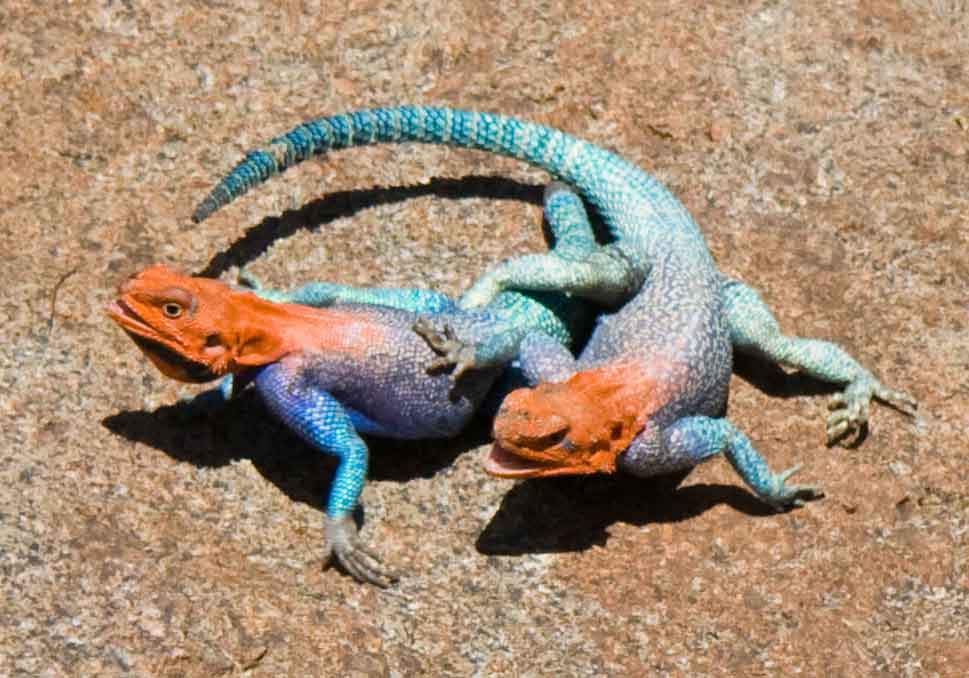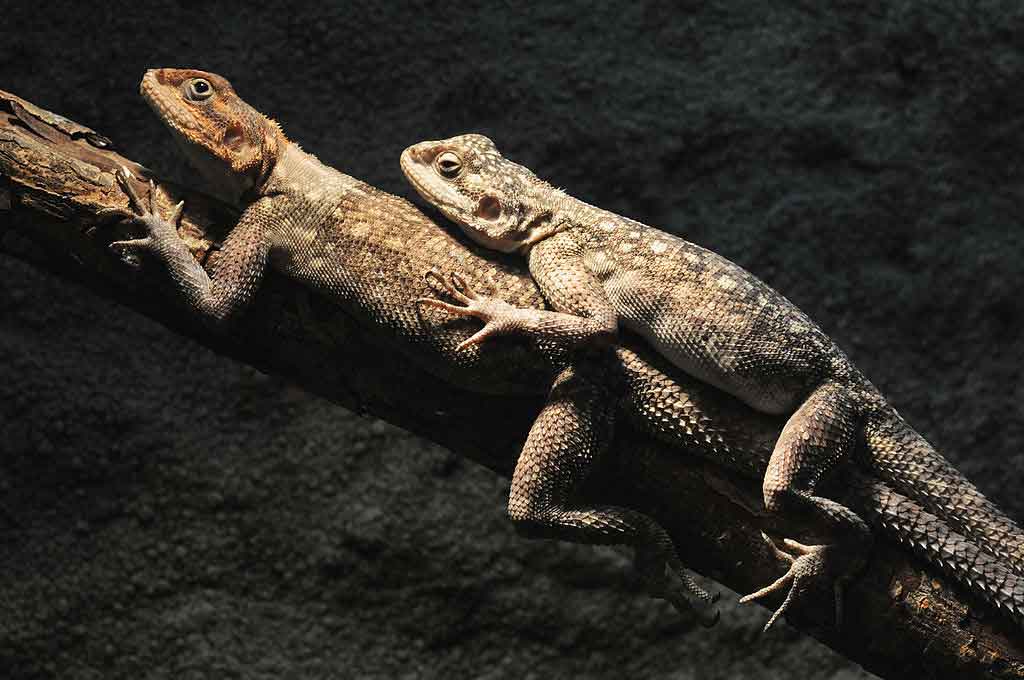
Content |
|---|
Characteristics
The Red-headed rock agama has a very marked color change, but it is only visible during the day. At night, the look of a Red-headed rock agama is uniformly gray. According to your mood, the Red-headed rock agama changes its color.
The females., juveniles and lower-ranking males have brown to gray bodies. Dominant males are recognized by their flattened steel-blue or olive-green body and yellow head and tail., about orange to red. Depending on the subspecies, head color spreads over anterior body. The males acquire their splendid colors when they have warmed up in an elevated place during the day.
During gestation, females show yellow to orange spots on flanks and turquoise spots on head. The tail, long and round, does not drop, unlike numerous iguanas or of the Skinks.
Its size varies between 13 and 30 full length cm. Males are usually 7,5 to 12 cm longer than average female.
Behavior

The Red-headed rock agama lives in colonies with a dominant male in a limited area. Group size can be up to 25 individuals. At dawn, group members are activated. During the day, the dominant male usually stays in a high place and shows his color.
Yet Red-headed rock agama also likes to warm up on a high place in the scorching sun. Stand on front legs and stretch body, and occasionally the tail, diagonally up. When a sexually mature young male changes color, is expelled by the dominant male and has to find his own territory. In a fight with a rival, the fighting male's head turns brown and white spots appear on the body. The males emit hissing sounds and try to strike the opponent's head with their tail.. But, before doing it, adopt a threatening posture. They shake their heads back and forth, lift the body off the ground and unfold the skin folds of the throat.
The “Red-headed rock agama” in captivity
Terrarium
In its original habitat, the Red-headed rock agama live in groups of several animals. This condition must also be maintained in the terrarium.
The terrarium for him Red-headed rock agama must have very generous dimensions for a couple, or better, one male with two females, since the Red-headed rock agama captured in the wild have a pronounced flight reflex, apart from great mobility. So, dimensions must be at least 200 cm long x 100 cm deep x 150 centimeters tall.
As the Red-headed rock agama he is very hungry for sun, must be brightly lit, of course with UV, temperatures should be 26-32°C with a basking point per animal up to 38°C. Humidity during the day should be at a constant level. The humidity during the day should be 40-50%, but it should be sprayed every morning and every night.
The terrarium must be provided with a sand mixture suitable for digging as a substrate, as well as various stones and branches to climb, in order to provide the animals with sufficient variety.
Diet
as food, live insects come into question, they must be pollinated regularly, if possible you have to feed many ants, which unfortunately is hardly possible without raising, in any case the diet should be as varied as possible.
Reproduction
The Red-headed rock agama (Agama agama) it's hard to breed
In the wild, mating usually occurs before the rainy season, but it is probably less due to the time of year than to the increased food supply, so maybe you could try to provoke mating in the terrarium by giving more food and spraying with special intensity. If this is successful, which, as I have already said, would be a very lucky case, the eggs are incubated at about 30°C and around 70% of humidity during 60-90 days.
For sale "Red-headed rock agama"
First of all, I would like to say that almost all animals found in trade or exchanges are wild caught, and that it takes a lot of intuition to keep these animals, and wild-caught animals in general, unfortunately most of the animals that are sold die due to improper care, and only very rarely are hatchlings successful in the terrarium, so I would advise anyone who is not really versed in terraristics not to buy them, I know that animals are beautiful, but precisely for this reason we must try to protect them.
The price of a "Red-headed rock agama" in the exotic animal trade ranges from 20 – 25 EUR.
